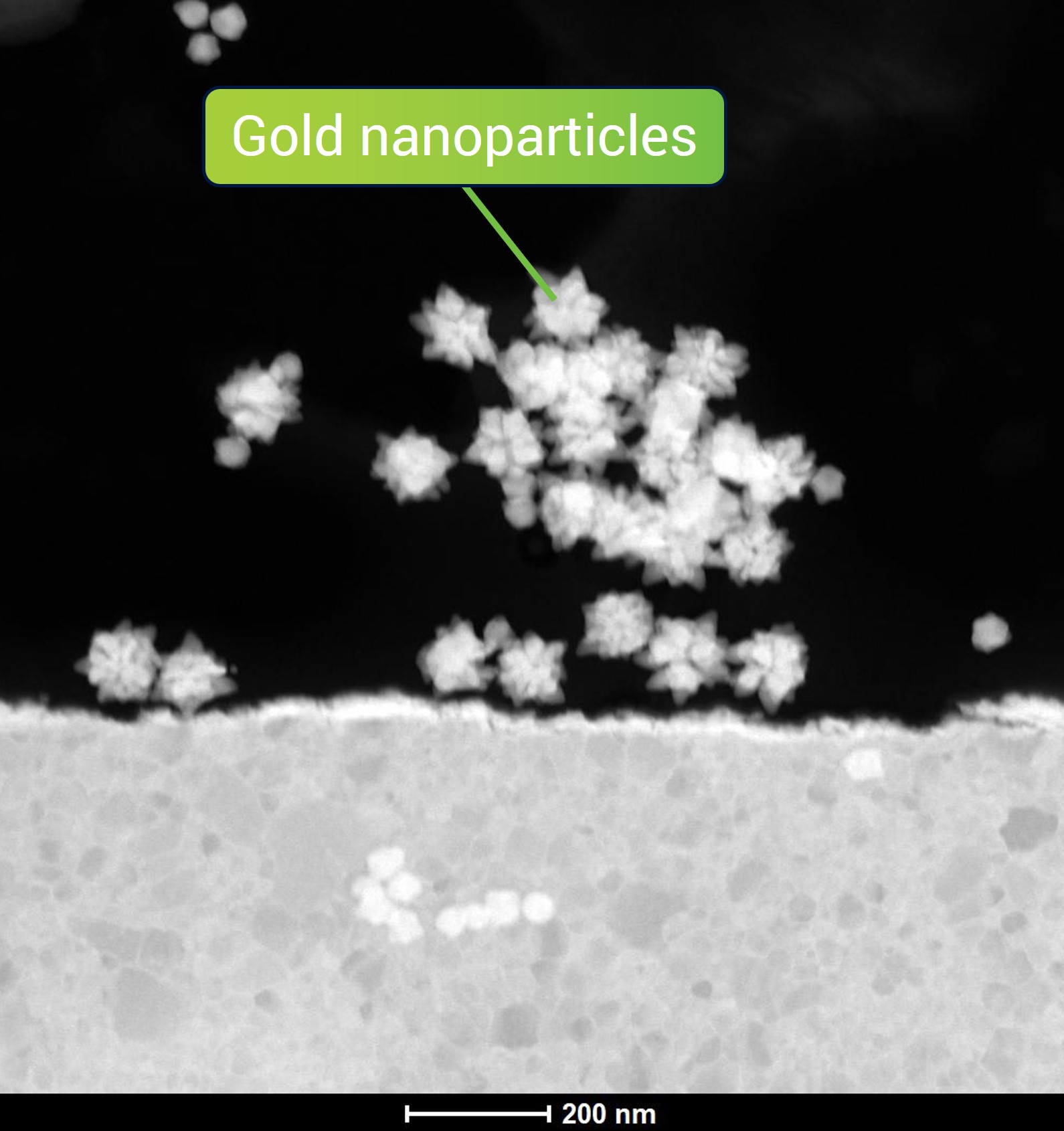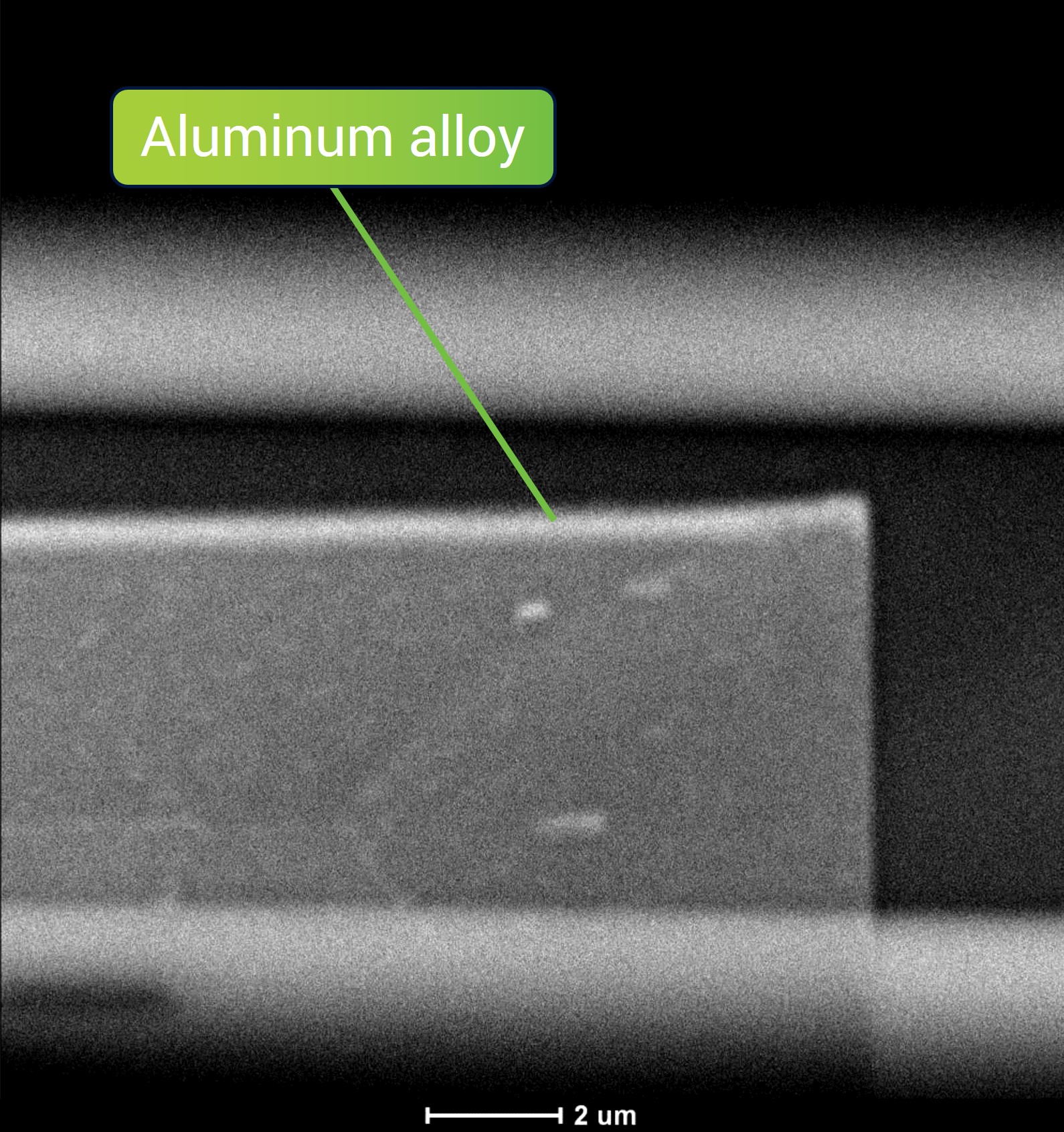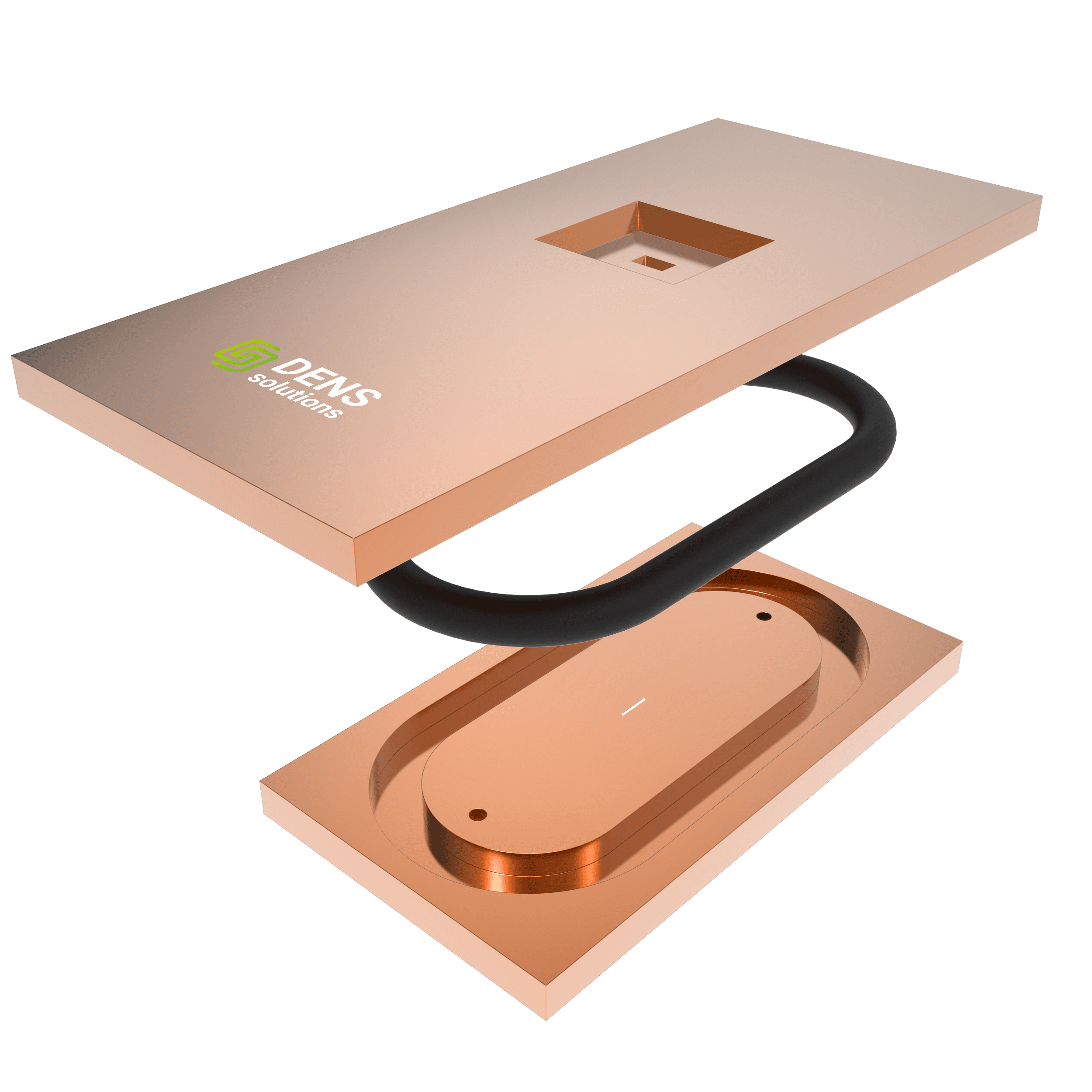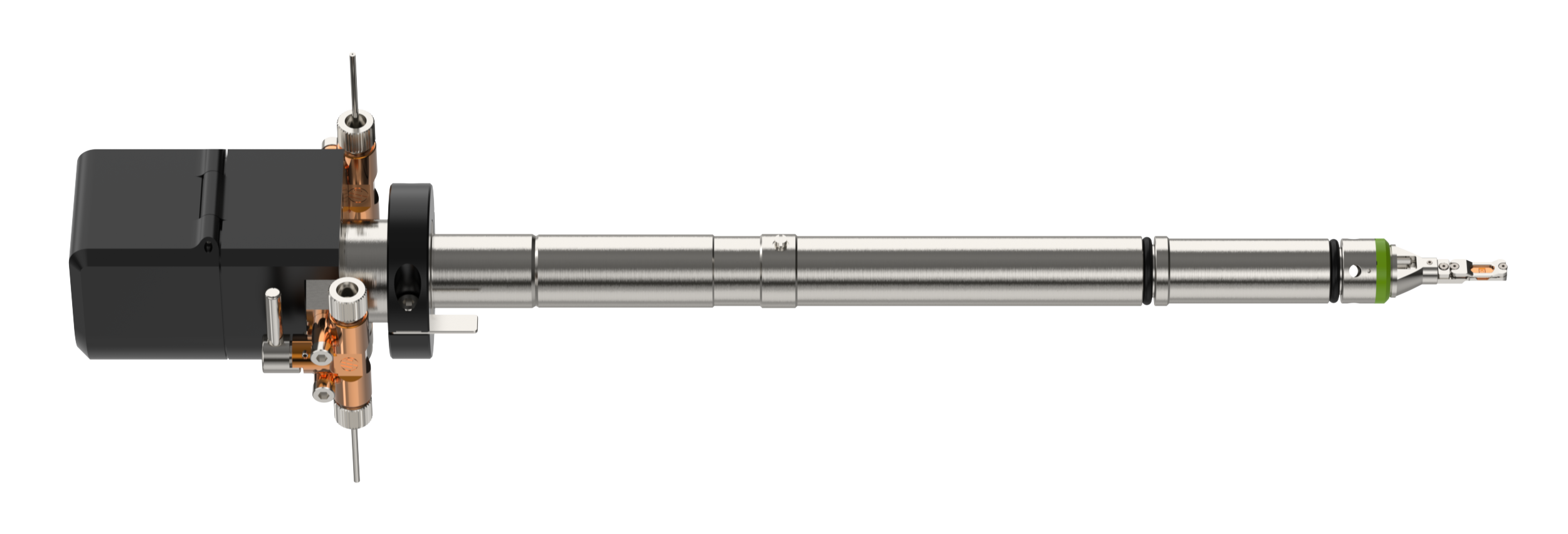
MEMS-based Sample Carriers
The heart of our technology
The core of the Stream Infinity system is our patented Nano-Cell (NC), which consists of a functional and seal chip – together forming a sealed compartment that enables you to safely perform liquid experiments inside the electron microscope. We offer two different Nano-Cells that you can select based on your experimental needs: the Liquid + Heating NC and the Liquid + Heating + Biasing NC.
Complete flow control
The unique Nano-Cell design includes an on-chip inlet and outlet and a liquid channel, formed by the spacers surrounding them. The liquid runs directly from the inlet to the outlet through the sample area, enabling the liquid delivery to be both reliable and reproducible. Furthermore, due to the possibility of manipulating the flow in the sample area and its direction, it is possible to remove electron-beam deposited species from the observation area.
TEM movie showing liquid reaching the sample area within the Nano-Cell after only 31 seconds.
TEM movie demonstrating Stream’s ability to easily dilute and flush away beam-induced species through flow control.
Perform electrochemistry
It is possible to measure the electrochemical response of the sample in the Nano-Cell and to correlate it with (micro)structural changes. The MEMS-based electrochemical cell consists of three electrodes: Working (WE), Reference (RE) and Counter (CE). In the latest Nano-Cell design, the electrodes are parallel to each other and perpendicular to the flow direction, ensuring equal potential distribution between the electrodes and a clean electrochemical environment, respectively.
Synchronized STEM movie showing the complete zinc plating/stripping process in 0.1 M ZnSO₄ solution during a CV cycle – By Dr. Shibabrata Basak, FZ Jülich (DOI).
Perform flow-dependent electrochemistry
The direct flow control in the Nano-Cell, combined with the presence of the WE, RE, and CE electrodes, enables the study of various electrochemical reactions based on liquid flow rate. For instance, decreasing the flow rate can shift metal deposition from a thermodynamically driven to a kinetically driven process, as seen in the video below.
STEM movie showcasing the power of Stream in studying the flow rate dependency on the electrodeposition of copper.
Perform temperature-variable (electro)chemistry
Electrochemical reactions are inherently sensitive to temperature variations, and controlling temperature effects is crucial for optimizing electrochemical processes. The Nano-Cell’s combined heating and biasing capabilities enable simultaneous investigation of (electro)chemical processes as a function of temperature. This can provide valuable insights into the fundamental and practical aspects of electrochemical systems, such as batteries and fuel cells.
TEM movies depicting copper plating and stripping at 30 °C (left) and 90 °C (right) – Courtesy of Prof. Joe Patterson, UC Irvine.
Gas purging
Thanks to the on-chip flow capability of the Stream Nano-Cell and the usage of the pressure-based pumps, the liquid in the field of view can be temporarily removed from the imaging area by flowing (inert) gas, which is termed “purging”. This purging method can improve the (S)TEM imaging resolution, as well as the chemical and electronic analysis of your sample via energy-dispersive X-ray spectroscopy (EDX) and electron energy-loss spectroscopy (EELS), respectively.

Time series of in situ STEM images showing the repeatable removal of liquid by purging with an inlet gas pressure of 3 bar and the refilling of the NC by stopping the purging.
Easy sample preparation
Loading the sample onto the MEMS-based Nano-Cell is easy and fast to perform. This can typically be done either via a process of dropcasting or via a FIB lamella. The electrochemical method of sample deposition is also possible but not considered here.
Dropcasting the sample
Nanoparticles are typically in powder form and are prepared in a solvent, such as ethanal or water, for direct dropcasting onto the Nano-Cell’s electron transparent windows.

STEM image showing dropcasted gold nanoparticles on the membrane of the Stream Liquid Biasing chip
FIB lamella
Using a dedicated procedure, it’s also possible to prepare a FIB lamella on the Stream Infinity functional chip in a dual beam either for heating and/or biasing experiments.

Sample courtesy of Dr. A. Kosari, TU Delft.
Request a quote
Request a quotation for any of our products.
Contact us
Get in touch with us for any questions you may have.




